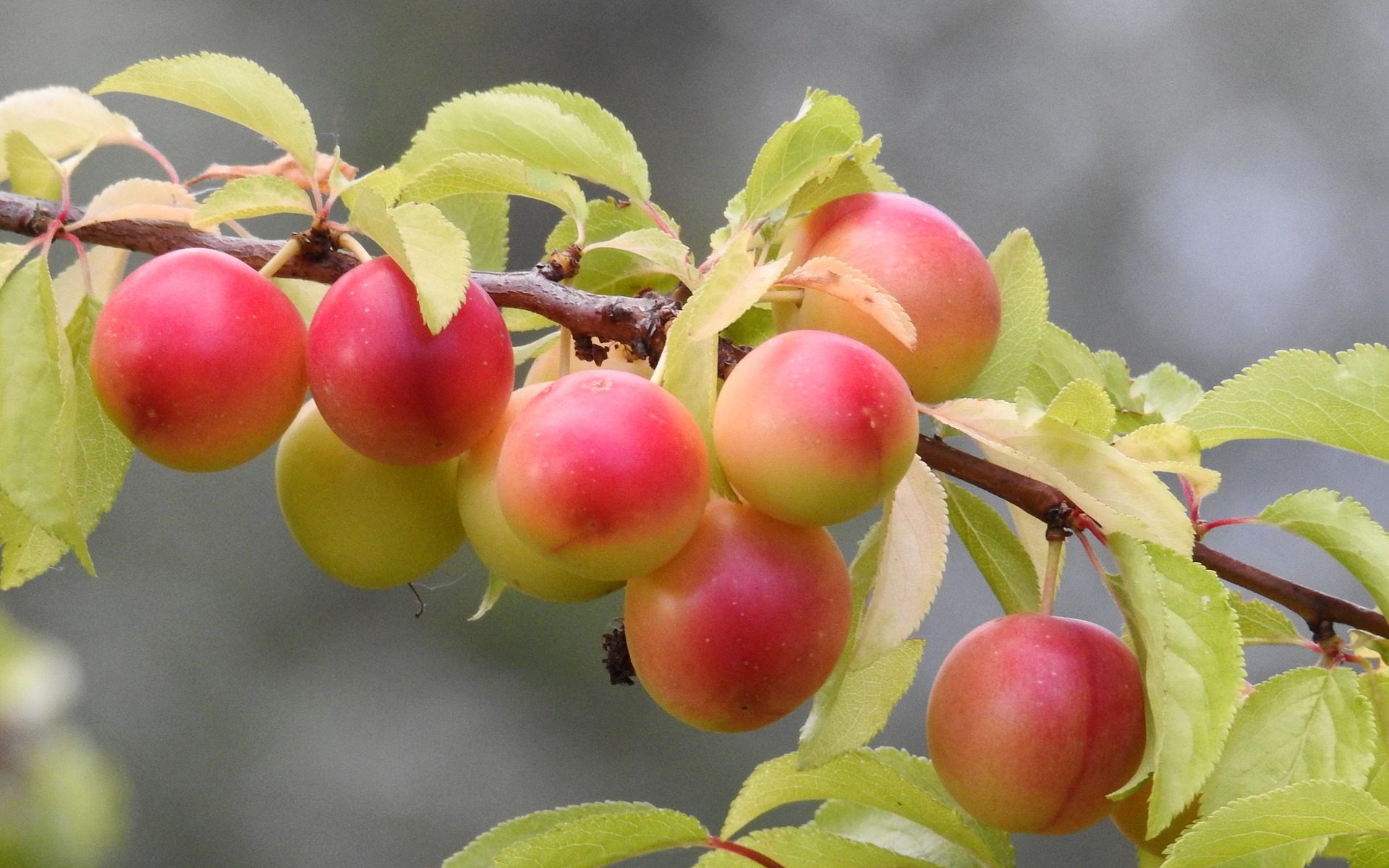The plum is preferred because of its way fewer requirements than the prune and its sure annual fruit production. In content of nutrients and salts competes those of the prune. Fruit are also good for fresh consumption and especially for processing into compotes, nectars, jams, marmalades, pestyl, brandy, etc.
The high content of pectin contributes to the good gelation and preservation of the processed fruit product. A specific combination of sugars, acids, pectin substances, mineral salts and vitamins not only impart a piquant taste of fruit, but help to the better utilisation of other foodstuffs, incurred by the human organism. Pestyl ( dried pressed fruit bars) contains a large quantity of vitamin C, preserves well during the winter and is used for the treatment of scurvy etc.
From production trees there can be received fruit from 100-200 up to 300 – 500 kg.
Biological and botanical features
The plum is presented by an extremely large variety of forms which differ in looks, chemical composition, technological qualities of the fruit, growth peculiarities of the trees, etc. The trees grow rapidly at an early age and subrogate early in production. The plum, overall, is a cold resistant plant. The warming at the end of winter and in the beginning of spring, however, bring it quickly to growth and flower due to which it becomes sensitive to recurring frosts. These frosts affect mainly the fruit buds, the blossoms and young fruit.
The plum is characterized with good dry resistance. The requirements and to the soil are not large. It is successfully grown on various soils, but reacts adversely to soils with highly compressed, compacted and clay alluvial layer. It suffers from chlorosis, where the soil contains large quantities of lime.
Varieties
Although the plum is represented by a great variety of species, practically, there are a limited number of varieties distributed: Early yellow afuzka, Red аfuzka, Yellow аfuzka, Еnibakanka, Banarka, etc. Recently great interest has been sparked to a new sort – Calipetrovska red аfuzka which features a high level of fruitfulness and early entry into production of large and beautiful fruit with very small stones.
Cultivation
In the private farms ther could be an overlap of more varieties with different period of ripening with view of a long continued self-sufficiency with fresh fruit.
It is good for the trees to be planted by several varieties. For more varieties provide better pollination and fertilization results. Special attention deserves the Red Godechka аfuzka, which requires foreign pollination. The trees of this variety and the Banarka sort are partly self sterile. The yellow and the blue аfuzka are self fertilized.
The plants should be planted at a distance of 6 x 4-5 m. The distance may be reduced or increased depending on the variety, soil conditions and the type of farming. The provision of one watering two or three weeks before the ripening of fruit pays off very well.
The plum shall not be attacked by diseases and enemies as with prunes and plant protection can be limited to a minimum. Consideration should be given to the preservation of the fruit from brown rot and leaf scale on young plants.
